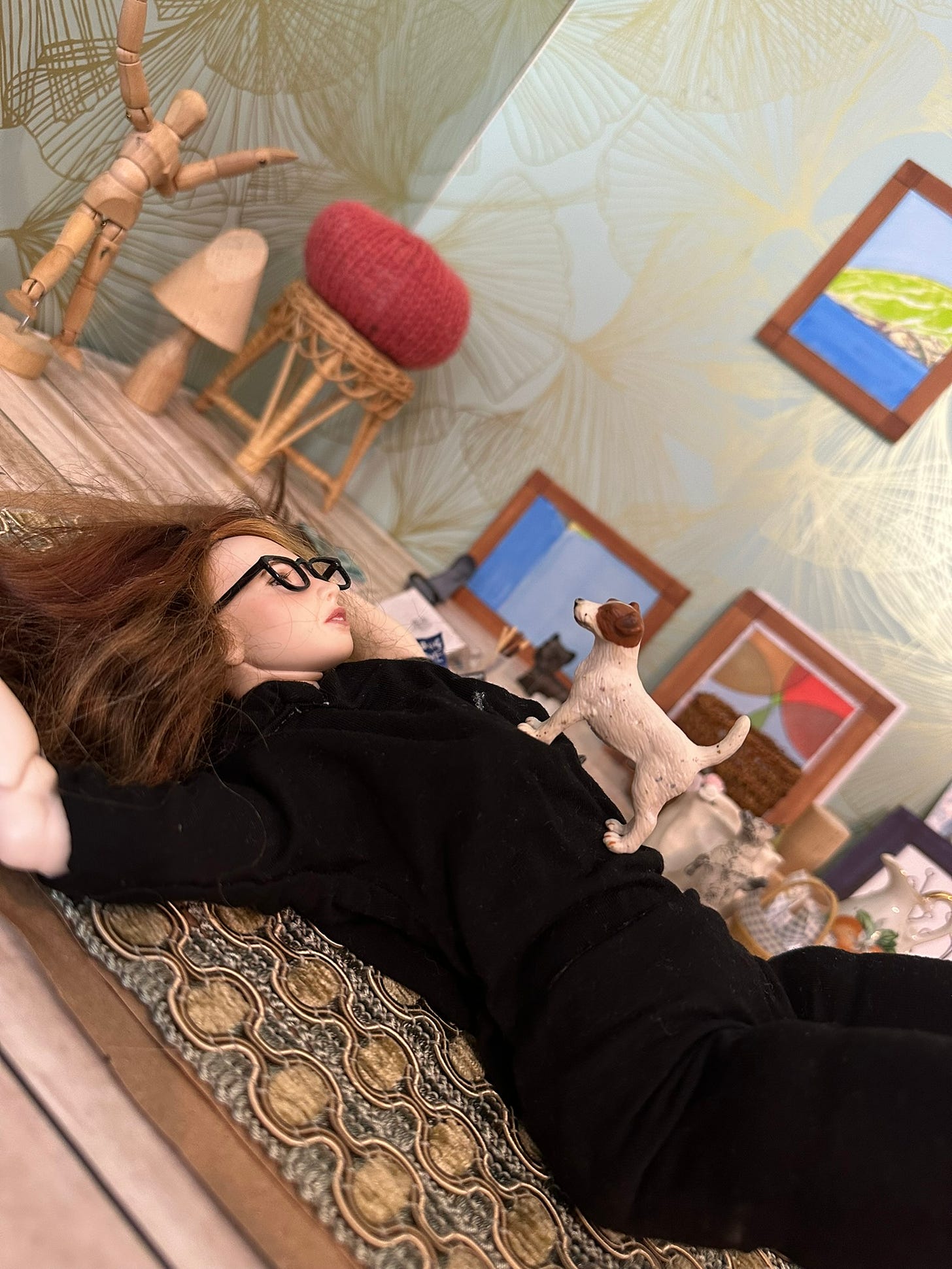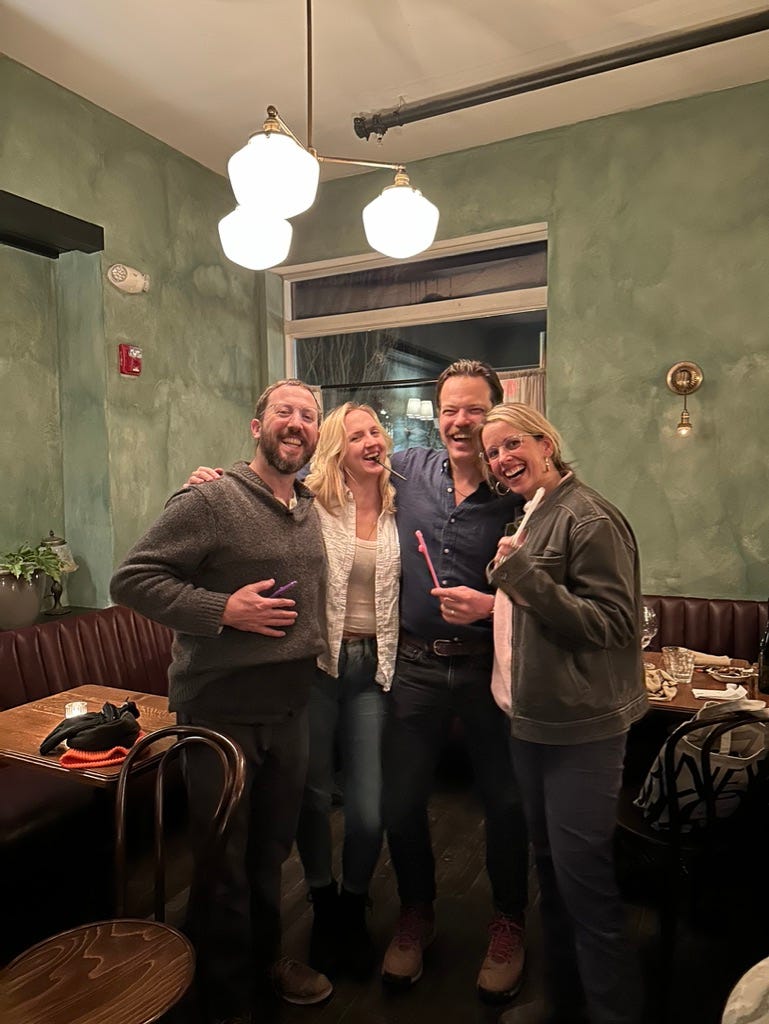As many of you know, I am in my last semester of an MFA at the Stonecoast Creative Writing program here in Maine. That means it’s thesis time. GULP. I’m experiencing overwhelm which needs to be kicked to the curb. So travel with me, as I try to figure out how to get vertical.
I applied to Stonecoast because it was close to home and low residency, I had little concept of how competitive a program it is, or the caliber of the faculty. To my great surprise (I do stumble into things like Mr. Magoo), I’ve been able to interact or work with some amazing authors I’d already read–Chen Chen, Elizabeth Hand, Rick Bass, Debra Marquart, David Anthony Durham, Susan Conley, Ron Currie, Jr., and some new-to-me writers that rocked my world, like John Florio, JJ Amawaro Wilson, and choreopoet Monica Prince.
When talking about choreopoems (poems performed in multiple mediums at the same time—dance, music, acting, art, lasers, parkour, etc.), Monica said, “With choreopoems, you have to have an unflinching commitment to your art.” I imagined a one-woman band with all body parts moving independently but in concert with each other, a total occupation of mind and body, a full-send, as my kids call it.
So I was sitting there, and the words unflinching commitment to art kept repeating in my head until I asked myself, “What would my world look like if I had an unflinching commitment to my own art?”
Florence [Welch] and the Machine has this song, King, on her latest album where she repeats the line, “ I need my golden crown of sorrow, my bloody sword to swing, I need my empty halls to echo of self-mythology. I am no mother. I am no bride. I am King.” and then ends the song with “I was never satisfied, it never let me go / Just dragged me by my hair and back on with the show.” This is about the sacrifice for her artistic vision.
Then I hear the echoes of Claire Dederer’s Paris Review essay The Art of Monstrous Men, where she takes the mirror she’d been holding up on some #metoo male artists and turns it on to women, on to herself.
Maybe, as a female writer, you don’t kill yourself, or abandon your children. But you abandon something, some nurturing part of yourself. When you finish a book, what lies littered on the ground are small broken things: broken dates, broken promises, broken engagements. Also other, more important forgettings and failures: children’s homework left unchecked, parents left untelephoned, spousal sex unhad. Those things have to get broken for the book to get written….Because the finishing is the part that makes the artist. The artist must be monster enough not just to start the work, but to complete it. And to commit all the little savageries that lie in between.
Claire asks what savagery I’m willing to commit for my craft. Florence asks what I will strike down with my bloody sword to be King of my domain. These words, unflinching, sword, and savagery, all sound violent.
And now, here on the cusp of 50 with hard-etched parentheses at the edges of my smile, I am beginning to understand what they mean. Moving out of my traditional support role as mother, bride, or business support has not been easy. I might compare it to the rock climbing move called a “dyno,” where holding on to the edge of a cliff by my fingertips, my legs dangling toward the abyss, I monkey jump two-handed to the next precarious handhold. And even if I make it, I’m still hanging on the cliff face, my fingertips are shredded, I have chalk dust in my eye, and then my estrogen decides to take a swan dive and leave me there wondering what I’m even doing on the cliff in the first place. Then the Talking Heads start playing out of a boom box that John Cusack is holding up. He’s just looking at me, swinging in a climbing harness five feet away, bobbing his head and trying to hit the low notes, “And you may ask yourself, Well, how did I get here?"
I tell him, “That black leather jacket is a stupid thing to wear while rock climbing.”
“Oh yeah, nice mom jeans and sweater set. You get those at Sam’s Club?” and then he hits the fast-forward button on the tape deck, and after a few starts and stops, the intro to Led Zepplin’s Immigrant Song plays. He flips me the bird and yells, “I thought you were an artist.” as he repels down the cliff.
That driving beat, those first few bars of screaming, Ahhh Ahh Ahhhhhhhh Ah, combined with regular old spite feels like jumper cables on my heart. I climb again. I’m muttering “Fuck you, John Cusack.” over and over because maybe he’s right. My sweater set is atrocious. I can do better. I can be more interesting, not for him, but for myself.
This is what it is like with my writing community. I crave it and need it for inspiration. This is one view of what it looks like. Here are some of the people who make me want to write all the time: (L to R) Michael Ferry, Leah Scott-Kirby, and Paul Calvert.
It’s absurdly proactive and challenging. They all want to help me be a better version of myself (not always the case in families or other communities). One mentor said, “You’re weird. I like it. It’s unique and interesting. Keep going.”
I think sometimes about what it took for me to let myself be weird. By 18, I’d been in 8 different schools. I grew up assimilating. I was a chameleon. I observed the systems and the social hierarchies and found a way to blend in from a very early age. It sounds way more intentional than it was. The goal was never to stand out or draw attention, only to become one of them. I changed my language, my clothes, my hair, my interests, and whatever it took to become like the others. I was always polite.
All this assimilating and being nice made it pretty hard to actually hear or trust the real me. How can anyone trust a chimera, a shapeshifter? But it turns out this chimera of personalities is the actual me. I just learned that, like five minutes ago. Which also happens to be the moment I was willing to write something and let someone else read it. When I write, dammit, it’s 100% me. It’s terrifying.
If John Cusack showed up in real life, I’d probably just be…nice and compliment his black-on-black attire, and ask him some dumbass questions about himself, like if he likes green beans or if he actually fell in love with Catherine Keener or if he’d ever considered organizing his albums biographically before High Fidelity. I’d likely offer little of my own experience and then look for an escape route ASAP because talking about myself is a surefire way to make me stutter. It’s not just the assimilating that has made it an uphill battle, but my dyslexia which compounded thanks to a decade with Lyme Disease. I say things in reverse sometimes or get confused mid-sentence unsure of where I started, or where I’m going. So I put myself in a box of polite and nice. I have a lot of them—boxes. A mom-of-three box. A wife box. A business box (gotta make money), an aging body box, a sister box…oh, this list is annoyingly long. What’s my point?
In short, I’ve felt hemmed in and contained by boxes I’ve allowed or that have been placed on me, and now I’ve lost some time and I’m a little sore about blindly conforming to societal expectations rather than my own. I want out of my own penchant for obedience and to actively build my partnerships with my husband, my children, and the people I work with. I want to try and be me, the chameleon, the writer who writes fiction and nonfiction, poems, essays, mysteries, sci-fi, erotica…all of it because each mode is useful for telling different stories and I am done being afraid of not fitting in. Maybe I can fit in, by not fitting in? The first time I read David Mitchell’s Cloud Atlas, my head exploded. Here he was, telling a single story in multiple genres. WHAT!? This Post-Modern delight, probably given to me to help me find ‘my genre,’ solidified my desire to explore many genres in my writing instead. This month, I’ve been playing with a short mystery, but since I can’t ever just tell a story straight on, it’s a mystery set in the future. Oh, I’m getting giggly just thinking about it.
“Don’t get too giggly,” yells the man in black from 200 feet down, “You have to finish your art too. As far as Claire and I are concerned, it doesn’t count unless it’s finished and put out in the world.” He keeps yelling but this is my story, and though I try to be kind in the real world, I drop an anvil on his head.
“That really hurt, Nina.”
I don’t yell sorry or anything. Tres impolite.
Again, Johnny-boy and Claire have a point. It’s not enough to let myself just get weird. What will I do to make sure I finish these stories? What savagery? The untidy house and missed appointments, well, that’s already happening along with freezer meals and boxed cereal for the kids. Maybe, I’m getting close. Right now, it’s the interruptions and the distractions Susan Conley talks about that are slowing me down. Time vanishes. Always being available by phone and then the new candy of Instagram Reels or TikTok. The goofy pandas always get me. Oh and the dogs, and the sourdough baking, the miniature kitchens, and the stop animation. People are so creative and willing to entertain me. Should I not provide an audience? Not at the expense of my own art, not at the expense of finishing. I want agency, not passivity. Clarity, not furry teeth and glazed eyes. I want my kids to see this too.
Agency and intention have pulled me from the depths of despair more effectively than any drink or drug.
So, thank you Florence, John, Led, Claire, Susan, and David for modeling the full commitment to art. And Monica, for lending me the words to put to it. What does your unflinching commitment to your craft look like? What can you cut away to get there? What can you add?







“(I finally got fed up with my indecisiveness and marginal progress and sense of overwhelm and creative chaos. I started thinking in systems. I say this believing that systems also need a break some days and rebooted when it starts malfunctioning.)”
I relate to this so much 🌸 I got pretty tired of my own crap and decided I was done effing around.
What does your unflinching commitment to your craft look like?
Routine, like any other job. Set sittings and timers dedicated to certain aspects of craft: the reading, the mind sketching, the drafting, and revising for submission. With set times I am no longer asking myself, “What should I be working on or reading?” My projects get dedicated time in a day or a day of a week or day in a month. Anything else is bonus. My projects have a priority reading list. (I finally got fed up with my indecisiveness and marginal progress and sense of overwhelm and creative chaos. I started thinking in systems. I say this believing that systems also need a break some days and rebooted when it starts malfunctioning.)
What can you add?
I added a weekly fiction group to ensure “unflinching dedication” to my novel rewrite.
While all this sounds very boring and rationale, it offers me clarity and peace I need for unleashing the circus in my writing.